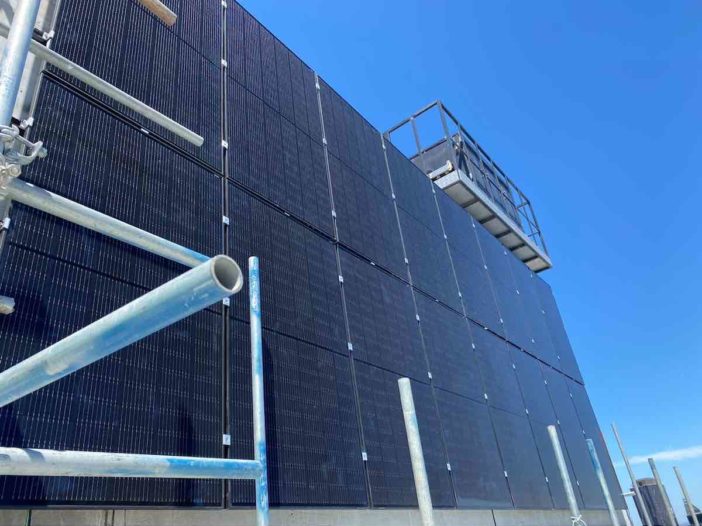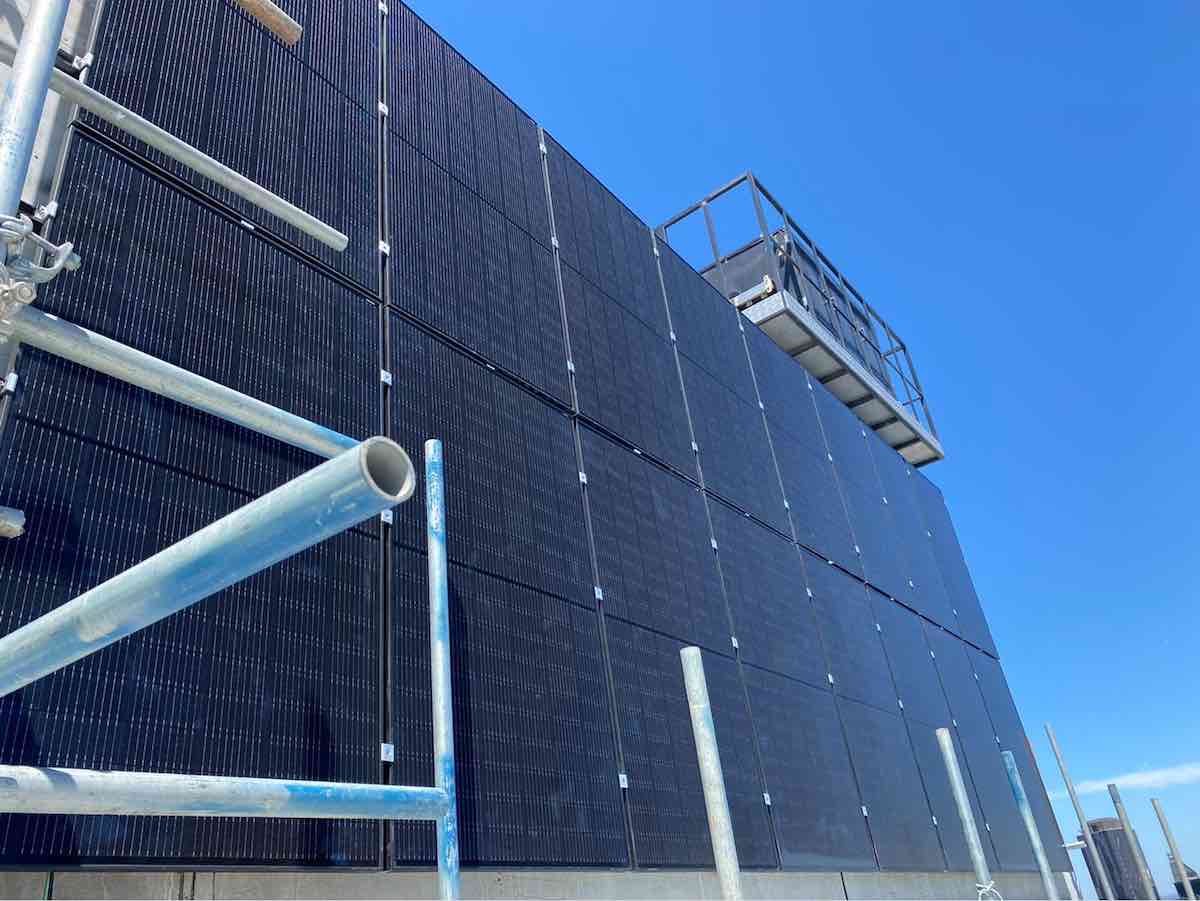
Melbourne now boasts a second vertical solar system, and potentially Australia’s largest in terms of panel numbers, after the installation of a 42kW PV array on an outer wall of the Paragon Tower project, a 48 level residential building on Queen St in the city’s CBD.
The 128 panel project, which was installed for property developer Beulah International by local outfit b.energy, used 325W Trina Solar HoneyBlack mono-crystalline modules, affixed onto the building’s exposed lift core.
In a statement on its Facebook page, b.energy said Beulah had made the company responsible for the design, construction, operations and maintenance of their spend to integrate green renewables into Paragons aesthetics – and the vertical solution had been the result.
“The combination of a painted lift core and stylish HoneyBlack modules have markedly complemented the building design aesthetics, will reduce common property electricity costs,” b.energy Chairman James Dunstan said.
“Generating c30MWh [a year] far exceeds the renewables that could otherwise be achieved on the constrained rooftop,” he added.
In a separate Facebook post, Trina Solar congratulated b.energy on the Paragon project, describing it as “an incredible feat” achieved by the innovative and efficient use of the latent building lift core.
Trina also thanked b.energy for using its all-black modules, which it said were “the perfect aesthetic choice” for high-end residential rooftops.
The new vertical solar array follows the installation of a similarly unorthodox system in the second half of last year, on the Harbour One building in the inner city Docklands precinct, also in Melbourne.
That project, an 87-panel vertical solar array was installed by local firm Energy Spec Electrical in partnership with Melbourne-based embedded network specialist Winconnect in response to the dual challenge of unsuitable roof space and high power bills.
The total capacity of the vertical array was not specified, but Winconnect had said it would generate around 32,000kWh a year, the equivalent of powering 11 apartments off-the-grid over that period, and save the building’s owners’ corporation $6000 a year on energy costs.
At the time, Winconnect also claimed that the Harbour One vertical array was a first for Australia, but One Step noted that the “Welcome to the Jungle” house in Darlington, Sydney, had a CEC award-winning solar wall made up of a custom order WINAICO WSP-300 with a black backsheet connected to SolarEdge optimisers and mounted to Schletter rail.
And on Australian territory in Antarctica, a 105-panel, 30kW vertical solar farm was switched on at the Casey research station in March of 2019, to provide around 10 per cent of the facility’s annual demand, and slash its use of diesel fuel.

Sophie is editor of One Step Off The Grid and editor of its sister site, Renew Economy. Sophie has been writing about clean energy for more than a decade.

